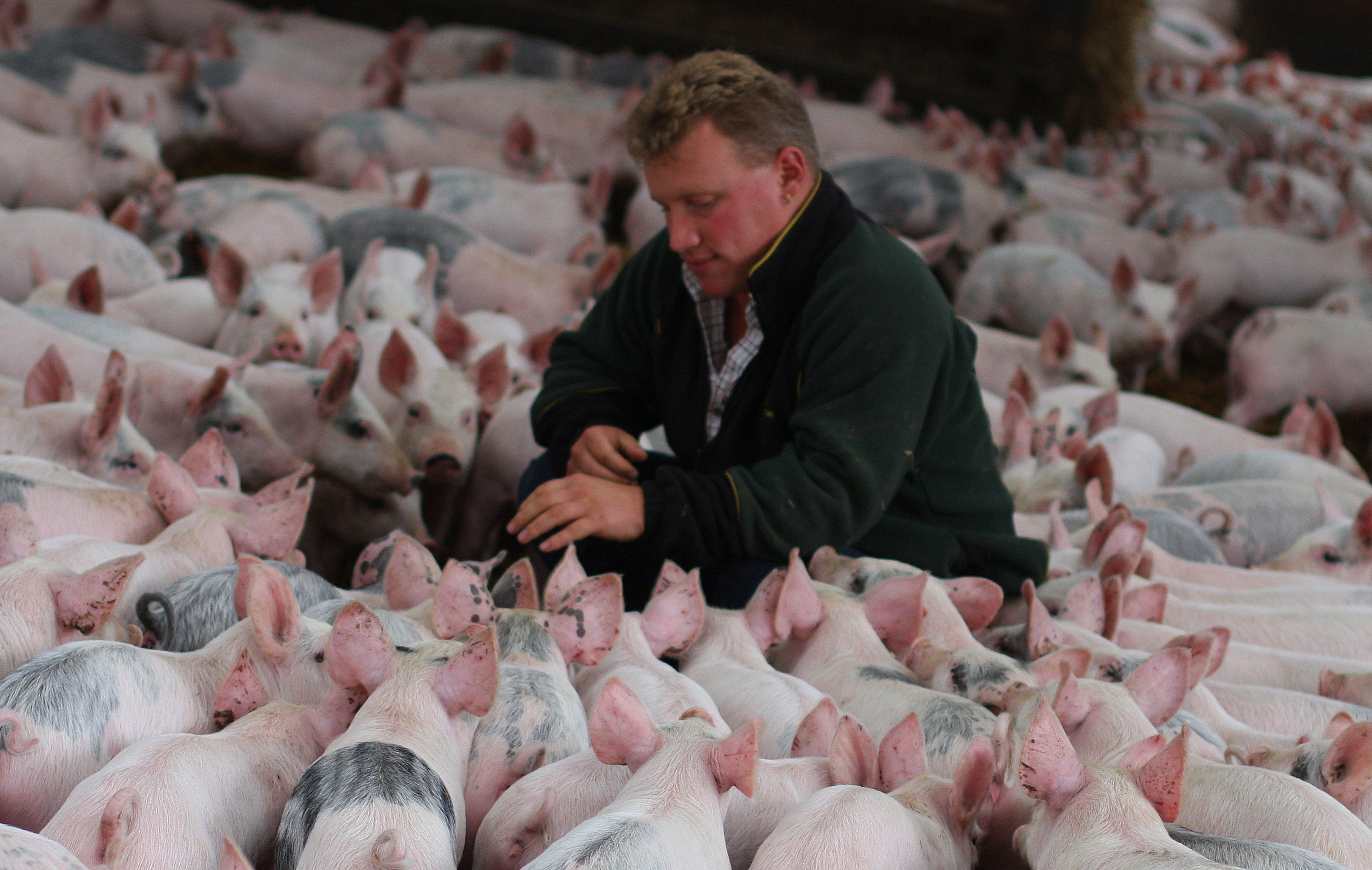Evaluating the relationship between human and animal influenza viruses
Assessing the relationship among multiple variants of influenza viruses circulating in animals and people and understanding their relative evolution in these hosts over time is key to improving vaccines for people and animals and for understanding the potential risk of future interspecies transmission events.

StripeyAnne on flickR, original name : The Pig Piper of Ham-lyn©
The latest OFFLU Swine Influenza Virus (SIV) Group meeting took place in Minneapolis, USA, 19-20 March 2013. The meeting had two major outcomes.
Characterization of the relationship between human and swine influenza viruses
Data on influenza viruses circulating in pig populations worldwide has been shared, but more effort is required for its compilation and analysis. According to the OFFLU SIV group, there is increasing scientific evidence from surveillance and genetic analyses that human seasonal influenza viruses and their variants have historically been introduced to pig populations by humans and are still circulating in different swine populations worldwide. The analyses of the HA protein of influenza viruses in pigs, a protein which plays a key role in virus-host interactions and in vaccine strain selection for human and animals, showed significant diversity among strains circulating within and between geographic areas. The maintenance of such diverse viruses within pigs for long periods of time has important implications for swine influenza vaccine strain selection and assurances of efficacy, which will have to be mainly tailored to the needs of the region. These viruses also pose a risk of re-introduction into the human population.
This global initiative requires further investment for compilation, analysis, and overall evaluating of the potential for human viruses to spread into swine and conversely for swine to be a reservoir for viruses that have human pandemic potential, and should be used in risk assessment for pandemic preparedness.
Proposed new HA gene cluster naming system for designating influenza viruses in pigs
The objective of this new nomenclature system developed and proposed by the OFFLU SIV group is to create a common language to be used by human and animal health sectors to designate swine influenza viruses on a global scale. This system will allow for viruses around the world to be evaluated by a unified set of criteria and their genetic relationships understood in a common context. Such a system is also important for targeting groups of viruses to study for antigenic properties and developing effective human and animal vaccines.
The proposed system is a phylogenetic classification system, distinguishing clusters of viruses that share common genetic characteristics. Therefore, it defines the relationship between the different influenza strains, which are continually evolving. This system enables the assessment of the genetic relationships between influenza viruses circulating in swine among different geographic regions as well as between human and swine seasonal influenza viruses.
The group will continue to work with the Influenza Research Database (fludb.org) to provide the HA gene cluster names based on the new system for future web-based cluster determination tools for swine HA sequences with free public access.
The OFFLU Network
OFFLU is a global open network of expertise on animal influenza established jointly in 2005 by the World Organisation for Animal Health (OIE) and the Food and Agriculture Organization of the United Nations (FAO) to support and coordinate global efforts to prevent, detect and control important influenzas in animals. OIE/FAO reference laboratories and world leading experts from a range of disciplines in animal and human health take part in the discussions. OFFLU collaborates with the World Health Organization (WHO) on issues relating to the animal-human interface, including pandemic preparedness for early preparation of human vaccine.
The OFFLU Swine Influenza group started in 2010 and meets on an annual basis.
Source:
http://www.oie.int/for-the-media/press-releases/detail/article/evaluating-the-relationship-between-human-and-animal-influenza-viruses/